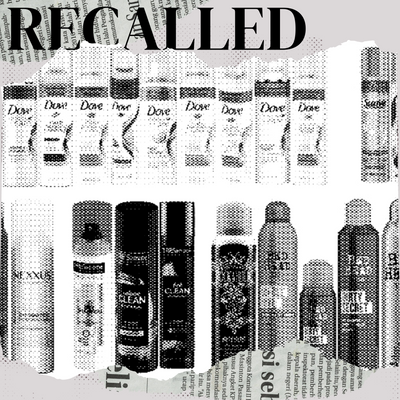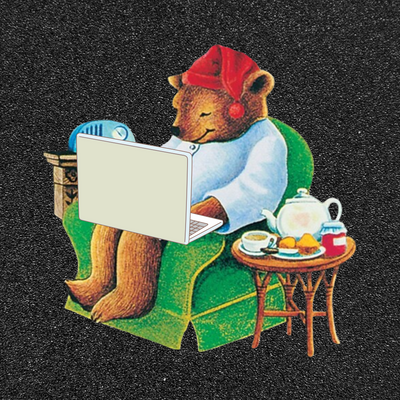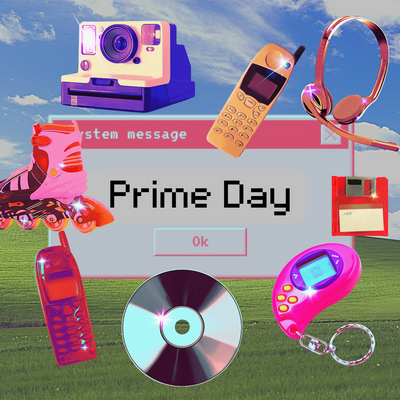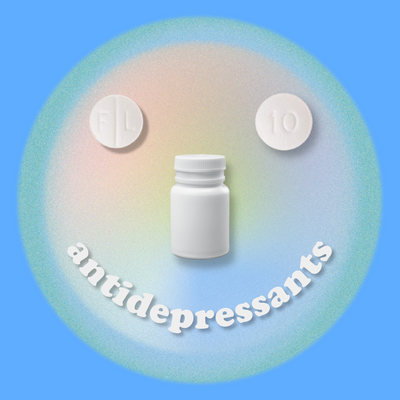
Before barbershops were cool and LGBTQ+ issues were being pushed forward, there was @rudysbarbershop. Since ‘93, this Seattle-based hub has been a proponent for inclusion, helping all people – straight, gay, bi and in between – express themselves through hair. 25 years, a product line, and many barbershops later, Rudy’s is still championing the cause of identity. True to their ‘For Everybody’ roots, Rudy’s supports partners like @itgetsbetterproject and @lalgbtcenter and donates shower products to shelters that serve LGBTQ+ youth.
It’s been a whopping 22 years since The New York Times published a story titled “A New Generation Seems Ready to Give Bisexuality a Place in the Spectrum.”
The writer interviewed a handful of bisexual men and women about their fight for inclusion within the gay and lesbian communities. We learn of the deep “underground” in New York where men sleep with other men but live straight lives with wives and families. There’s even talk of “bisexual bulletin boards of America Online” where bisexual people can come together and support each other, both online and finally, in person in major cities such as San Francisco and Boston.
Now, you would think an article about sexuality in 1995 would feel decidedly old fashioned, but aside from “cyberspace” and “America Online” references, this could be written in 2017. Bisexuality is still a topic of conversation and even now, a large percentage of people either don’t understand it or don’t care to. Just last month, writer La’Ron Readus posted a YouTube video titled “Things Straight Guys Say To Bi Guys,” in which he hilariously and honestly acts out the ignorant things other guys say to him. There’s the popular “Oh, so it is a choice!” and “I thought that was just a thing women did to look sexy!”
Many years later, it’s still so confusing to some.
Who isn’t confused? Bisexual people.
There are more who self-identify as bi than ever. According to a 2016 study of 9,000 people by the Centers for Disease Control and Prevention, 5.5 percent of women and 2 percent of men identified as bisexual between 2011-2013. This is up from 3.9 percent and 1.2 percent respectively between 2006-2010. Though this shows an increase, these studies are difficult to nail down because it all comes down to wording. It’s possible more women identify as bi just because they have more of the opportunity to have a same-sex experience due to the stigma surrounding bi men. It could also be because men define sex differently or because some people prefer a different label or any number of other wording differences. It’s just not easy to quantify the amount of bisexual people in the U.S.
People fought for so long for that ‘B’ in LGBT, and I refuse to be the person that’s going to throw that away because I think I have a more colorful word.
It was only during the middle of the 20th century when famed sexologist, Alfred Kinsey, proposed that sexuality occurs on a continuum and that an “inestimable number of people sits somewhere between the two poles.” It was only updated in the 1970s by Fritz Klein who developed his own method called the Klein Grid, in describing a person’s sexual orientation.
Even though more people have come out as bi, it’s still a difficult journey for many, even for Gen Z, often called the “sexually fluid” generation. This is true for all genders but men have a particularly difficult time. Just look at their role models. Girls have celebs such as Demi Lovato, Miley Cyrus, Cara Delevingne, and Angelina Jolie—and more. Guys have almost zero A listers who identify as bi. There’s Green Day’s Billie Joe Armstrong and…Barry Manilow. Recently, Younger actor Nico Tortorella, 29, came out as bisexual, being one of the only young men in the spotlight right now. Previously, he had been known as “sexually fluid” but in 2016 he told Vulture that he’s uses the bisexual label. Just a few weeks ago, hip-hop artist, Steve Lacy, came out as bisexual as well.
“Straight women who find out that I’m bi are weirded out.”
“The more I’m having these conversations, the more comfortable I am identifying as bisexual,” Nico told the publication. “I’ve been so hesitant about using the word for so long, because it does have a negative connotation in our generation. People fought for so long for that ‘B’ in LGBT, and I refuse to be the person that’s going to throw that away because I think I have a more colorful word.”
This bisexual fight for equality isn’t over because being labeled as such is still difficult, especially when people actually come out bisexual. As Nico explains, the label sounds negative, as if you just can’t make up your mind. For sales manager Dericko Broomes, he’s experienced this biphobia in both straight and gay communities—with men and women.
“I’m looked at by gay men as being in the closet,” he tells us. While he feels that living in New York City makes it easier for him to express himself, he still sees a stigma against bi men. “Straight women who find out that I’m bi are weirded out,” he explains. “Bisexuality is not something I planned for. It’s just who I am.”
Dominic DeLuque also has trouble dating straight-identified women. “Queer girls kind of get it, usually. I think it’s less of a stigma and more of an aversion to people who may present or perform as more obviously queer than say, a straight masc dude,” he says.
Dominic identifies as bisexual/queer, but feels labels can be limiting. “It’s hard to pinpoint a label that can encompass everything,” he explains. Most people in the gay/community assumes he’s gay and while that doesn’t bother him, he acknowledges the bigger issue at play.
“Those assumptions often mean it’s harder for people to understand more nuanced identities,” he says. “Biphobia is pretty apparent in straight and queer communities, unfortunately.”
“Queer people should have the space to explore how they identify without anyone’s input,” he adds.
“Someone I was hooking up with physically got repulsed when I said I hooked up with women and enjoyed it.”
Damien Basile has been out as bisexual since he was 17. He believes many bisexual people don’t use the label because of biphobia and bi erasure. “The ‘I don’t like labels’ thing can come from a misunderstanding of what bisexuality is or an internalized biphobia,” he explains. He points out that it’s rarely gay or straight people who say they don’t like labels. “No one is saying you need to call yourself bisexual, but if you have an attraction to more than one gender you fall under the bisexual umbrella.”
He also has trouble dating straight-identified women. “Most I’ve encountered are either turned off by it or afraid I’ll leave them for a man,” he explains. Still, he’s experienced the most biphobia in the gay community.
“I’ve had someone tell me ‘good luck with that’ when I said that I’m bisexual,” he says. “And someone I was hooking up with physically got repulsed when I said I hooked up with women and enjoyed it.”
So why has bisexual equality been so slow moving in the last 22 years? Well, there’s not one answer. There have been countless studies that prove bisexuality is just as real for men as it it for women. “With the spate of recent studies either published, in press or under review, the scientific evidence is beginning to accumulate: Men, as well as women, can be attracted to both sexes,” said one study from 2012. It could be because people feel more comfortable around those who are in boxes they can understand. Gay or lesbian? Fine! Somewhere in between? Confusing!
Gigi Engle, a writer and sex educator, believes coming out as bisexual is difficult for both sexes because, well, it’s just not taken seriously. It’s an additional struggle for men. “The reason it is so challenging for men is that we’re bred into a culture rife with toxic masculinity,” she explains. “If you do anything remotely ‘queer,’ ‘gay,’ or ‘feminine’ in anyway, you’re less of a man.”
“If you look at the stereotypes about bi people, particularly the ones that say bisexuality is just a phase, it’s fascinating that the assumption is we’ll all wind up with men,”
“On top of that, we don’t teach men to be emotionally intelligent. Being in touch with your sexuality and coming out at bisexual runs a risk of ostracism from your male friends. No one wants to be split from the group.”
For Damien, he’s basically always coming out, since people think bisexuality is just a phase. “It’s exhausting,” he says. Gigi isn’t surprised by this.
“If you’re interested in both sexes, people wrongly assume that you’re a hop, skip, and jump from just going fully gay,” she says. “The idea that male sexuality could be fluid is nearly incomprehensible for the majority of people.”
There’s also society’s idea of what a man “should” be—and it’s not someone who sleeps with more than one gender. That’s why beauty brands such as Milk Makeup and NYX Professional Makeup that show different types of guys are so important. Challenging masculinity is so important. It all connects to sexuality and the way society views men who are outside the norm—this includes bisexuality.
Eventually, we’ll look at people of all genders who identify as bisexual or queer the same, and they’ll have an easier time coming out. Until then, there are many strides we as a culture need to make. This is because we still as a soceity think about sex as it relates to men, says Ian Lawrence-Tourinho, a Director of the American Institute of Bisexuality and head of amBi, a social community in Los Angeles.
“If you look at the stereotypes about bi people, particularly the ones that say bisexuality is just a phase, it’s fascinating that the assumption is we’ll all wind up with men,” he explains. “Bi women? They’re just experimenting and will eventually wind up with a man. Bi men? They’re just experimenting and will eventually wind up with a man. Isn’t it interesting that men are apparently so irresistible that everyone invariably chooses them in the end?”
Then there’s how mainstream society sees bi men and women so differently. “[Women are seen] as open-minded, wild and sexual. It makes men hope for threesomes with her and another woman,” Ian says. “Straight male desire is centered; hers is secondary. A bi man coming out as bi is too often the equivalent of him coming out as gay. And that’s very uncomfortable for a bi man because he isn’t gay. Why would anyone want to go through all the trouble and come out as something that they are not?”
Spoiler alert: they don’t.
As a long-time supporter of the LGBTQ community and the It Gets Better Project, Rudy’s has partnered with world-renown artist, public speaker, and author Dallas Clayton to create a line of custom tote bags and stickers supporting Coming Out Day and the LGBTQ community. With every purchase of the custom Baggu tote, sticker sheet and Think About Someone You Love booklet (total cost: $21), Rudy’s will donate $5 to the It Gets Better Project. Our collective hope is to inspire people young and old to celebrate their individuality and this special moment.







